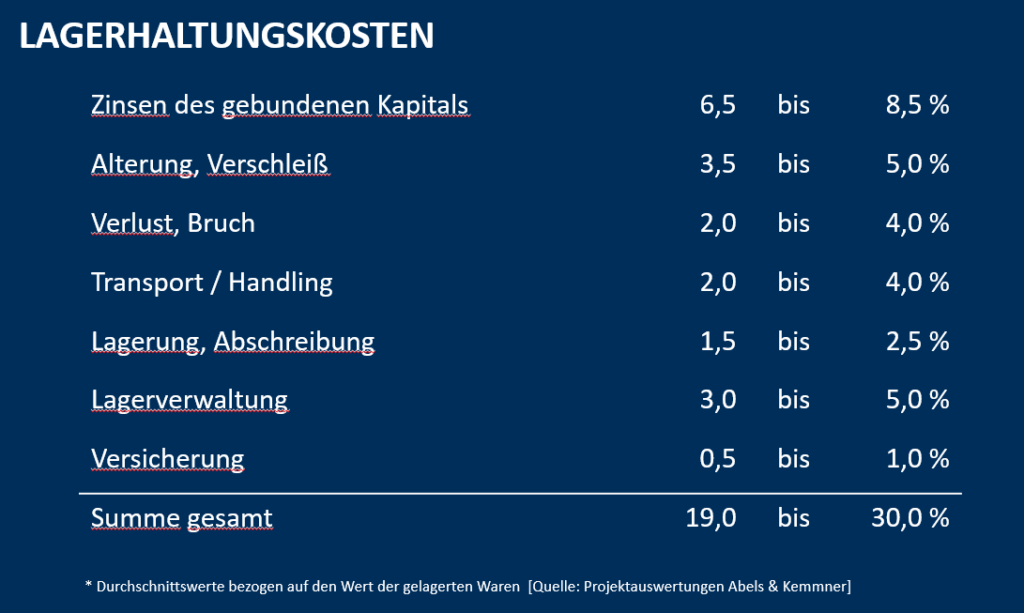The brand manufacturer Rollei optimizes its inventories with DISKOVER
More efficient results with less effort
The German brand Rollei has been around since 1920.
Even today, it stands for quality among professional and amateur photographers.
However, in order to survive in the increasingly tough online and retail business, the company needs more than just excellent products.
A perfectly functioning supply chain is at least as important.
For this reason, the company has recently optimized its disposition management.
Today, better results are achieved with less effort.
The supply chain management software DISKOVER from SCT GmbH is used.
Rollei GmbH & Co KG is a brand manufacturer of photography and video products that is currently active in more than twenty European countries.
The company sells professional photo accessories – such as high-quality tripods, lens filters, camera straps and studio flashes – action cams, dashcams and surveillance cameras, as well as digital photo frames and slide film scanners.
Since Rollei’s brand promise is quality, all products also come with excellent service: the all-round carefree package includes the option of replacing the product with a new device within a very short time in the event of damage for 24 months.
The product portfolio is sold both in the B2C direct business via online stores and via Media Markt, Saturn, Amazon and other retailers.
Rollei and Rolleiflex products are manufactured by partner companies.
As a brand manufacturer, Rollei is therefore fabless and does not have to consider in-house production in terms of planning.
The planning task focuses on the requirement to have the right quantity of goods in stock at the right time and at the right price.
Not having too much in stock is particularly important for Rollei, as the price requirements in the tough competitive environment are sometimes very dynamic.
On the other hand, too little is not possible at all.
After all, both the B2C business via online stores and the business with retailers require a very high level of readiness to deliver within the shortest possible delivery times.
High delivery readiness with minimal stocks
For Thomas Güttler, Managing Director of Rollei, maintaining a balance between the lowest possible stock levels and the best possible readiness to deliver has not always been the best solution.
“Due to the high delivery readiness requirements and the lack of tools to automatically optimize order quantities, stock levels were often too high,” explains Güttler.
This is because complex interdependencies have to be taken into account when planning the optimum, which Rollei was unable to re-evaluate across numerous work steps for each incoming order with over 1,000 items.
The determination of the current requirements had to be initiated again and again, determined across different systems and then evaluated.
A macro list was used, which drew data from two ERP systems and one merchandise management system.
The requirements were calculated for a period of the next 90 days using a single formula.
The calculations were based on historical data from the last 90 to 120 days.
This also worked in principle.
However, it still required a personal assessment because the system did not say what quantities should be ordered.
It merely indicated that there was a need – based on past sales and incoming stock.
One person then had to decide what and how much to order.
As a rule, too much was ordered.
Automation of the determination of requirements
Güttler therefore wanted a replenishment management system that would display daily requirements at the click of a button and automatically generate suggestions as to when and how much new stock should be returned to the warehouse.
It was also important to him that sales forecasts – including upcoming sales and not just historical data – were also automatically taken into account.
He also wanted to be able to broaden the horizon of the historical data in order to automatically recognize seasonal fluctuations, among other things.
In order to optimize the ordering process, collective planning should also be possible – in other words, when demand is detected, other products from a supplier should also be analyzed.
Special features such as Chinese New Year were also to be automatically included in the determination of requirements.
Overall, the aim was to achieve better results with significantly less effort.
This could not be achieved by expanding the established marker system.
The initial situation was therefore a business IT landscape that was still working without an MRP management system; orders were initially merged from two systems (one for the B2C area and one for the retail segment) and compared with data from the merchandise management system in order to be able to make MRP decisions for the entire company.
Rollei has now filled this gap with the introduction of the DISKOVER software.
Clear rules and regulations create trust
Today, Rollei relies on the DISKOVER APS system from SCT GmbH for sales forecasting and scheduling.
Requirements can now be determined much more easily and accurately.
Errors are also detected more quickly because the system also shows products where, for example, a label has been forgotten.
This helps Rollei to remove data corpses and master data errors more easily.
“What’s really nice now is that I have the confidence that we can rely on the system; we no longer check it, we rely on it. And if the system forgets to order a product, it’s not because of the system, but because of an error in the master data,” says Güttler, summarizing one of the benefits of DISKOVER’s automated scheduling suggestions.
The transparent scheduling parameters, rules and simulation tools, which provide a reliable basis for calculations, create a high level of trust.
Exceptions confirm the rule
The entire set of rules of the new supply chain management software system can also be individually adapted to the user’s strategies.
For example, Rollei plans top sellers so that they are never out of stock.
For this purpose, the required minimum stock level is determined, which should always be available in order to be able to fulfill sudden orders at all times.
However, not much effort had to be put into the individual design of the system.
Instead, the main tasks during the introduction were to check and optimize the master data previously available in the two ERP systems and the merchandise management system and to set the APS parameters to the required targets.
The project to introduce the new APS system was therefore completed within around 4 months, although the Christmas period still had to be deducted.
“The cooperation with the experts from SCT and Abels & Kemmner was very goal- and solution-oriented and very pleasant. However, I am convinced that DISKOVER will lead us to our goal of reducing our overall warehouse size and having much better product availability, which will increase our turnover and margins. Once this is achieved, the investment will be worth every penny,” says Güttler.
Everything can, nothing must
Rollei estimates that it only uses around 30% of what the APS system can do.
Also, around a thousand active articles that need to be planned are not many.
The company therefore does not see the need to exhaust all the details and facets of the system.
Nevertheless, Rollei benefits from the wide range of functions offered by the DISKOVER software.
Many individual user requirements can be met in the system without any programming effort and everyone can use what they need.
“For example, it’s nice that you can link a new product with a comparable model so that you can use historical data for planning, which is very convenient and increases accuracy.”
So even less complex companies can benefit from the full range of functions of a powerful supply chain management software system.
Ultimately, the aim is to achieve the best result with the least possible effort.
This is possible with DISKOVER and the use case at Rollei shows that even fabless companies with only around 1,000 active products can benefit from it.
When does supply chain management software start to pay off?
The amortization question when purchasing these systems certainly depends on many factors and the range of functions and convenience can vary depending on the system.
However, the basic decision-making factors are above all
Number of articles
Complexity must remain manageable.
The more stock-keeping units a company has, the more worthwhile it is to use an APS system.
Several stages of the value chain
The complexity of manufacturing companies is another reason to rely on APS systems, as several stages in the value chain for an end product also result in secondary requirements that also need to be planned.
Integrated planning reduces complexity.
Historical data and sales forecasts
Taking sales forecasts into account increases the complexity of the effort required to determine requirements if you do not want to plan solely on the basis of historical sales figures.
The more agile the system is, the more precise the requirements plan will be.
Regulations and simulations
With increasing expectations of achieving potential savings by reducing stock levels, the scheduling parameters, rules and simulation requirements are becoming more complex.
They are only available in supply chain management software systems.
Automation
Time is money and resources are scarce.
Dispatchers are better off concentrating on the problem cases in procurement rather than implementing numerous evaluations in Excel tables themselves.
An APS system that automatically determines requirements can take a huge amount of pressure off dispatchers in their daily work.
Reliable data
Without standardization of scheduling, the decision-makers’ gut feeling, which is never infallible, gains the upper hand.
Only transparent rules and regulations can create reliable and consistent decisions at all times.
Exceptions must also follow rules and regulations.
Performance of existing business IT
When classic ERP and merchandise management systems reach their limits, supply chain management software systems are often used as add-on tools for inventory simulation and determining planned requirements.
In general, ERP and merchandise management systems never have the full range of functions of such a powerful system.
The inaccuracies and therefore delivery readiness and inventory levels are correspondingly high.
All of these factors need to be weighed up when deciding for or against an efficient MRP management system.
There is also the question of what potential I have to reduce my stock levels while maintaining a high level of readiness to deliver, because ultimately reducing stock levels by 20% (Pareto principle) frees up enormous capital reserves and also saves numerous costs such as warehouse management, insurance and interest on borrowed capital.
Companies can have this question clarified through potential analyses by management consultants, such as those offered by Abels & Kemmner.
Supply chain management software systems can also be interesting for a small number of SKUs
Rollei did not need a potential analysis, as Güttler had already recognized this itself.
Also, only 1,000 products are to be planned and it is only a matter of requirements for the ordering system, as the company operates fabless.
Nevertheless, the use of DISKOVER software is worthwhile for Rollei, because all the other factors mentioned above, as well as the excess stock already recognized by the customer itself, speak for the use of such a system.
Numerous supplementary tools, such as a reporting system that can be configured as required, can also make day-to-day work easier so that better results can be achieved with less effort.
It remains to be seen how Rollei will finally assess the success of the inventory reduction after one year.
However, if it does – which Güttler assumes it will – Rollei will set a benchmark for every small and medium-sized company.
After all, there are only a few manufacturers and retailers that have fewer than 1,000 SKUs.
Rollei is a special case with its systems for B2B and B2C.
However, transferring the data from one system to the other would not have had the desired effect.

The original Rollei 35 came onto the market in 1966 and was the smallest 35 mm film camera at the time.
Even today, it is still one of the smallest ever produced.
The latest model has a significantly higher range of functions and is primarily aimed at analog image enthusiasts.

“I have the confidence that we can rely on DISKOVER; I haven’t changed an order proposal yet. That is very pleasant.” Thomas Güttler, Managing Director at Rollei

The savings potential lies not only in the inventories themselves.
The costs of warehousing must also be taken into account.
* The authors reserve the right to publish this text on the company’s own website or in other, non-competing publications or in other languages.
However, parallel secondary placement in the direct competitive environment is excluded.
Alternative arrangements are possible at any time if required.
Authors:
Thomas Güttler, Managing Director at Rollei
Tobias Brasch M.A., Senior Consultant at Abels & Kemmner

